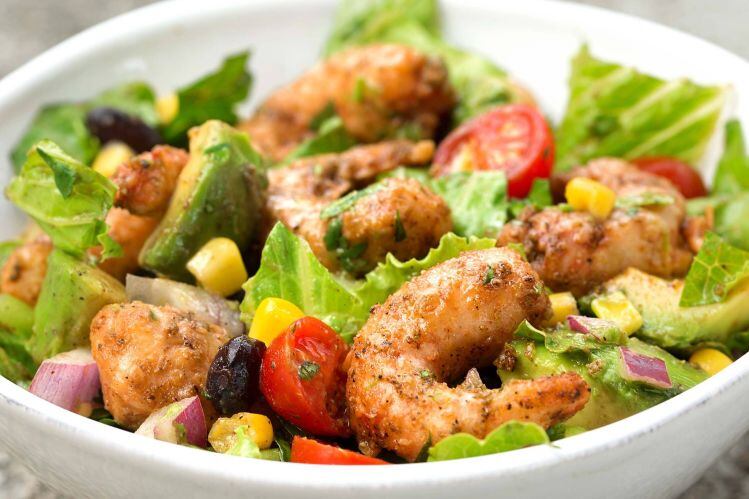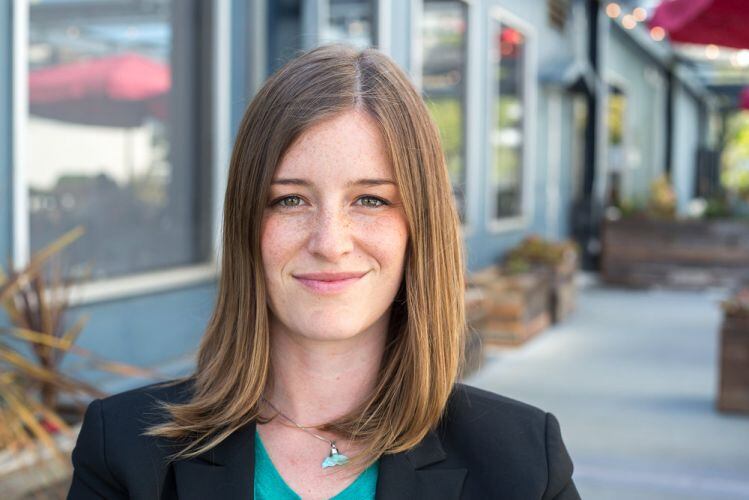“There are more people entering the space [players include Good Catch, Sophie’s Kitchen, Ocean Hugger Foods, Terramino Foods, Gardein, May Wah and VegeUSA] but competition is a good thing because it validates the market. Everyone’s also in slightly different territory so I think there is a lot of room for growth,” added Barnes, who is based in San Francisco.
And while she is new to the food industry, a master’s degree in marine biodiversity and conservation has armed her with a keen sense about the problem New Wave is trying to solve, which has proved particularly valuable in conversations with chefs interested in sustainability and ethics - as well as taste - as they develop new seafood menu items, she explains.
Shrimp is the most consumed seafood in the US
So why start with shrimp?
In the first instance, because it’s the most consumed seafood in the US ahead of salmon and tuna, making a logical place to start for a plant-based start-up, said Barnes.
Second, it’s an industry fraught with problems, she said.
“We [Barnes and New Wave Foods co-founder and materials scientist Michelle Wolf] were initially working on a shark fin alternative, because there are so many issues in the shark fin trade, but it soon became clear we could have a far bigger impact as well as a greater chance of commercial success with a shrimp alternative.”
She added: “Back in 2015 there were really no widely available plant-based alternatives to shrimp. Sophie’s Kitchen was still very small, and Ocean Hugger Foods [the brainchild of Certified Master Chef James Corwell] was developing tomato sushi [its ‘ahimi’ raw tuna alternative will be followed by ‘Sakimi,’ a carrot-based salmon alternative, and ‘Unami,’ an eggplant-based eel alternative] but wasn’t on the market yet.”

Shrimp farming in focus
So what’s the problem with the shrimp industry, and do consumers care enough to try alternatives?
Barnes explained: “A small percentage of the shrimp we eat is wild caught, where they often use giant trawling nets the size of football fields that scrape the bottom of the ocean for shrimp, but also pick up everything else, from fish to porpoise, dolphins, turtles and sharks. On average there are five pounds of bycatch for every pound of shrimp, which is not sustainable.”
Much of the world’s shrimp, meanwhile, is farmed in developing countries in tropical regions in southeast Asia, and comes with well-publicized problems of its own, from allegations of slave labor to food safety and environmental issues, said Barnes.
“Shrimp farming has contributed to the destruction of mangrove forests and wetlands to make way for shrimp farms and the pollution of waterways [organic waste, chemicals and antibiotics from shrimp farms can pollute groundwater or coastal estuaries],” claimed Barnes, although she acknowledged that buyers can seek out shrimp from fisheries that that have met standards for sustainable fishing set by organizations such as the Marine Stewardship Council (MSC).
While the average consumer is probably not aware of these ethical and environmental issues, chefs are paying attention, and a small but growing number of consumers are also starting to think more about safety and traceability when it comes to seafood, even if they are not losing sleep over human rights abuses in parts of the seafood industry (a story that earned the Associated Press a Pulitzer prize in 2016), she argued.
“There’s also the issue of what the shrimp are eating,” added Barnes. “Some farms are using fish to feed their shrimp [which depletes local fish stocks] and other farms are downstream from pig farms, and that’s what they are eating. I think at a basic level, people are starting to ask the question, where exactly did this come from?”

Rapidly-scalable
While there is more than one way to address these problems – some cellular ag companies such as Finless Foods are growing fish cells without farming fish as part of the ‘clean meat’ movement, while others seek to change the industry from within via sustainable seafood initiatives – Barnes wanted to present a rapidly-scalable alternative that uses ingredients and technology consumers recognize.
And like many other new players in the plant-based space, while she wants to make a difference, as well as a profit, she’s also aware that ramming her mission down people’s throats isn’t necessarily a winning marketing strategy and that in the first instance, the focus should be on making delicious foods that happen to be made from plants, then telling your story, if consumers are receptive to it.
Seafood muscle fibers tend to be shorter in length with a higher moisture content
So how difficult is it to mimic the taste, texture and appearance of shrimp with plants?
“We’ve tested hundreds of shrimp products of the same species and flavor and texture can vary enormously,” said Barnes, who is using soy protein, brown algae extract, natural flavors and some other undisclosed ingredients to create a plant-based alternative.
“We wanted to recreate the first bite, the chew, the overall experience, and to have something that can be cooked and prepared just like shrimp. You toss it in in the last three minutes of preparing a dish, just like regular shrimp.”
Texturally, shrimp is quite different to beef or chicken, she said. “Seafood muscle fibers tend to be shorter in length with a higher moisture content, so we wanted to mimic that.
“We use an extract from brown algae for texture and to impart a subtle marine note for flavor – we use vegan natural flavorings as well, but for protein for now we use soy, as the algae-based proteins we wanted to use were mostly green and people don’t want that in a shrimp alternative – unless it’s a St Patrick’s Day special... we’ve experimented with lots of different plant-based proteins but soy had the best color, flavor and amino acid profile.”
So how close is it to the real thing? Pretty close, said Barnes, who said that during demos and taste tests many seafood lovers took some convincing that it wasn’t the real thing.
The go to market strategy
While many plant-based ‘meat’ companies with the exception of Impossible Foods have initially focused on the retail market, New Wave started with the restaurant trade given that almost two thirds of seafood is consumed outside the home, she explained.
“Chefs know more about seafood than anybody and they want to offer more sustainable options. Chef Charlie Ayers at the Calafia Café in Palo Alto [a former executive chef at Google] was one of the first chefs to bring our shrimp to his menu and he just got it straight away. He’s also been really creative at finding a bunch of different ways to work with it in dishes from tacos to stir fries that has really highlighted its versatility.
“We also got on the café menu at the Monterey Aquarium and we’re also at [a restaurant at] San Francisco airport, where they are listing it on the menu as plant-based shrimp from New Wave Foods. In some places there have been co-branding opportunities and in others people are putting ‘shrimp’ in inverted commas, so we’re trying to understand what works best as we work with more partners.”
The goal now is to partner with larger restaurant chains and foodservice providers, said Barnes, who can produce around 3,000lbs a month from the current co-packing facility in California, but says the process is very scalable should a larger customer come on board.
Looking ahead, crab and lobster are logical next steps in the innovation pipeline, although salmon and tuna are also on the radar further down the line, said Barnes.
